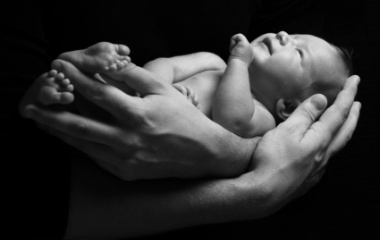
The first of Nissan and the first of Tishrei mark the beginnings of the Jewish year. The solar aspect of our calendar—representing the fixed laws of nature—begins in Tishrei; whereas the lunar cycle—symbolizing the ups and down of Jewish history—begins on the first of Nissan.
The solar year mirrors the agricultural cycle and begins as the rainy season approaches, whereas the lunar year, reflecting the supernatural aspect of Jewish history, begins with the month the Jewish people were formed into a nation. Even the name of the month, Nissan, related to the word nes or miracle, signifies the miraculous tenacity of the Jewish people.
As the lunar and solar years run on separate cycles, a leap month is added for seven of every nineteen years, harmonizing the two yearly cycles. The uniqueness of Jewish history is, in the final analysis, just part of the natural process.
Our Sages ordained that on Shabbat Rosh Chodesh Nissan— or the Shabbat before Rosh Chodesh— we are to read parshat Hachodesh, the command to sanctify the new moon and to establish Nissan as the first month of the year; a mitzvah so crucial that it is the first one given to the Jewish people.
During non-leap years, it is generally parshat Pekudei that is read on the Shabbat preceding Nissan. While the haftarah always has a thematic link to the Torah reading—having originally been instituted in lieu of the Torah reading—the four special readings of Shekalim, Zahor, Parah and Hachodesh, leading up to Pesach are independent of the Torah reading. Nonetheless, Pekudei and Hachodesh are most easily linked. The parsha describes the completion of—and subsequent dedication of—the Mishkan, which took place on Rosh Chodesh Nissan. This was exactly one year to the day that G-d commanded Moshe and Aharon to establish the calendar, with Nissan as the first month. The first of Nissan thus marked both our physical and spiritual redemption.
During leap years, it is parshat Tazria that we read on parshat Hachodesh. One would presumably have to look to the first eight verses of the parsha to find a possible thematic connection. We begin the Torah reading celebrating the birth of a child, and end it reading about the birth of a nation. While we generally associate the mitzva of brit milah with Avraham, the actual obligation for us today to perform this mitzvah is based on the command given in this week's parsha[1]. The eating of the korban pesach, which is the actual focus of parshat Hachodesh is dependent on that of brit milah; “an uncircumcised [person] may not eat from it” (Shemot 12:48). The covenant of the individual and the covenant of the nation must go hand in hand.
There appears, however, to be little linking the main theme of the parsha—the mundane laws of the skin disease of tzara’at—with the grandeur of the Exodus. Yet as so often happens, seemingly diverse components of the Torah complement one another.
If Pesach is about nation-building, tzara’at is about destroying that very nation. Our Sages assert that tzara’at is the physical manifestation of a spiritual disease, that of lashon hara, speaking negatively about others. The word Pesach, etymologically, can be divided into two words: peh and sach, the mouth speaks. Pesach is when we are to speak to our children, each according to their own particular needs. The seder experience is one of telling a story. Even the sanctification of the new moon was dependent on a verbal declaration. But should we misuse peh sach, should we speak improperly, we will all be sick.
There is no better way to incite strife and to tear apart a community than through words. The Torah obligates us to remove from the community one who manifests signs of tzara’at. They are to be quarantined so that they may reflect on what it means to build a community.
But the link between Pesach and tzara’at does not end there. Tzara’at can manifest itself in a home; and if it does so, the Torah demands that the home be destroyed (see Vayikra 14:33-45). Rosh Hashanah and Yom Kippur are focused on prayer in shul; on Sukkot we leave our homes, and Shavuot celebrates the communal acceptance of Torah. Pesach is the holiday that is centered in the home. Over and over again the Torah refers to the bayit, the home, in connection to Pesach. “And you shall take a lamb for each father’s home, a lamb for the household…And if the household is too small, he shall take the neighbour close to his home” (Shemot 12:4-5). Upon slaughtering the lamb, one “must take the blood and place it on the doorposts and on the beam of the home” and “the blood shall be as a sign on your home”. In preparation for Pesach, you must “rid your home of leaven”.
It is in the privacy of the home that the strength of the nation is built. How husband and wife, parent and child, speak to each other will determine how enduring our homes will be. May our homes be so strong that we may celebrate in a rebuilt Temple next year, in Jerusalem.
[1] As we discussed here, the Rambam asserts that each of the 613 mitzvot is obligatory only because they were given at Sinai, with the "mitzvot" of sefer Breisheet serving as historical precedent.



